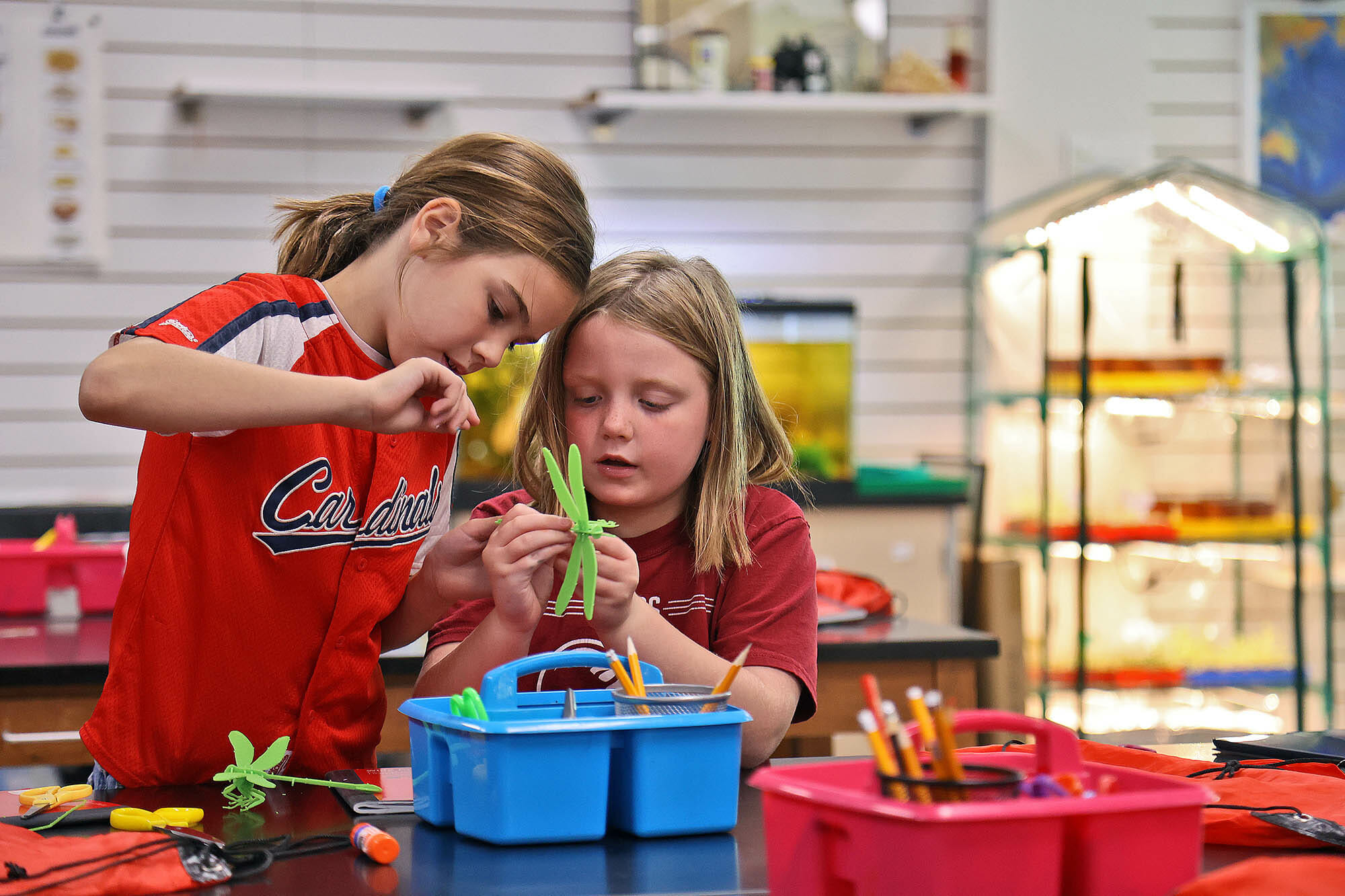By Laura Pupillo, Lower School Science Teacher
In third-grade science, students have been learning about Missouri ecosystems. Luckily, we have some great ecosystems on the MICDS campus that have provided the perfect opportunity for field studies. Using Polk Pond and the creeks on campus, students have examined what living and nonliving things make up these ecosystems and what organisms depend on these ecosystems for their survival.
One of the organisms our third graders have closely examined is the dragonfly. There are five migratory dragonflies in our area and scientists are trying to understand more about their migration patterns. As citizen scientists, we observed these unique organisms up close. Dragonflies spend most of their life as nymphs and then go through metamorphosis to emerge as the flying adults most of us know. Students searched for dragonfly nymphs and other creek life while scouting for adult dragonflies at the pond. Students were able to collect some great data while observing several migratory species.
Back in the lab, we focused on anatomy to better understand the dragonfly. Although drawing a detailed picture is a way to review anatomy, being able to assemble a 3D model that students could touch and manipulate helped them understand the different parts of the insect. New to the lab this year are two 3D printers that we were able to utilize to print off an articulated model for each student. The students were fascinated as they observed the process of 3D printing and thrilled to get their own dragonfly model to assemble and discuss with their classmates.
As we wrap up our study of ecosystems, we’ll head back to the pond another time to compare and contrast our previous field studies and finalize our migratory dragonfly count. We’ll also be exploring where our dragonflies are headed as we dive into learning more about migration.
Nice work, Rams!









